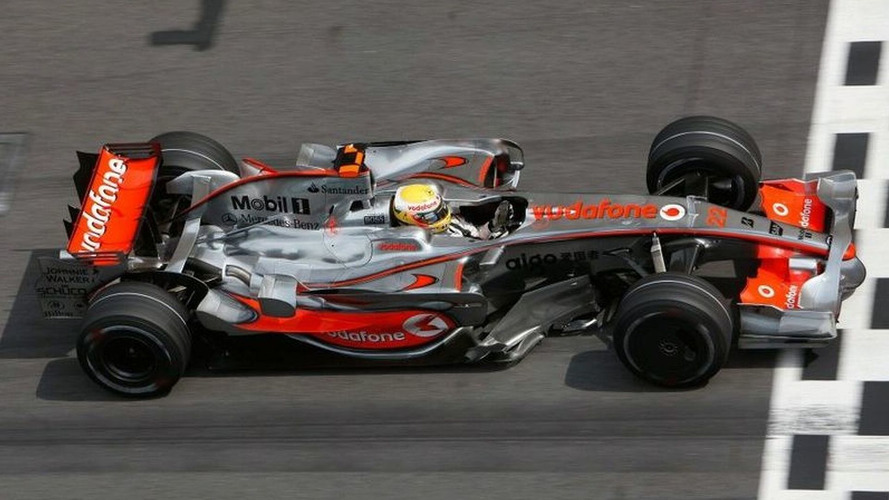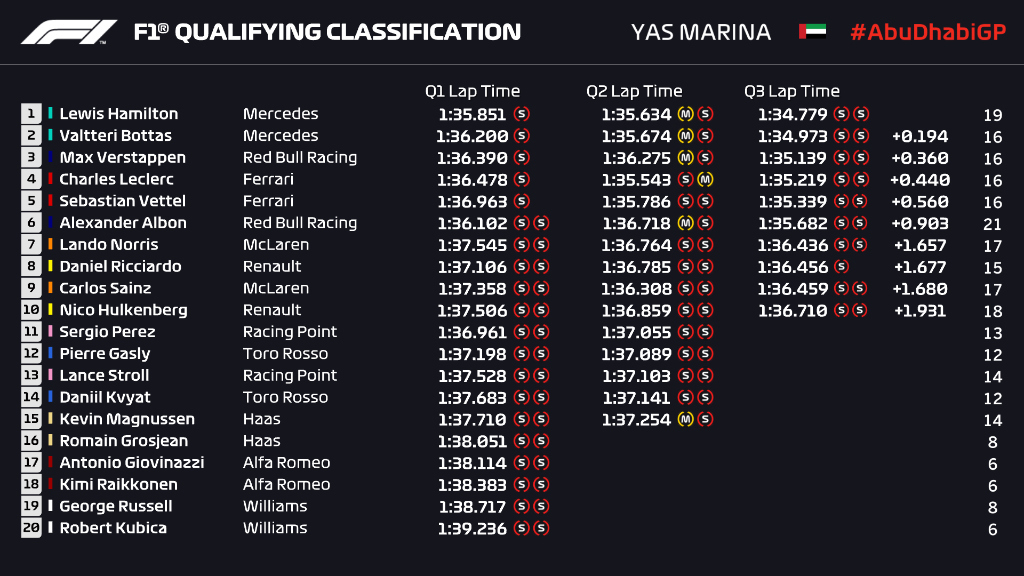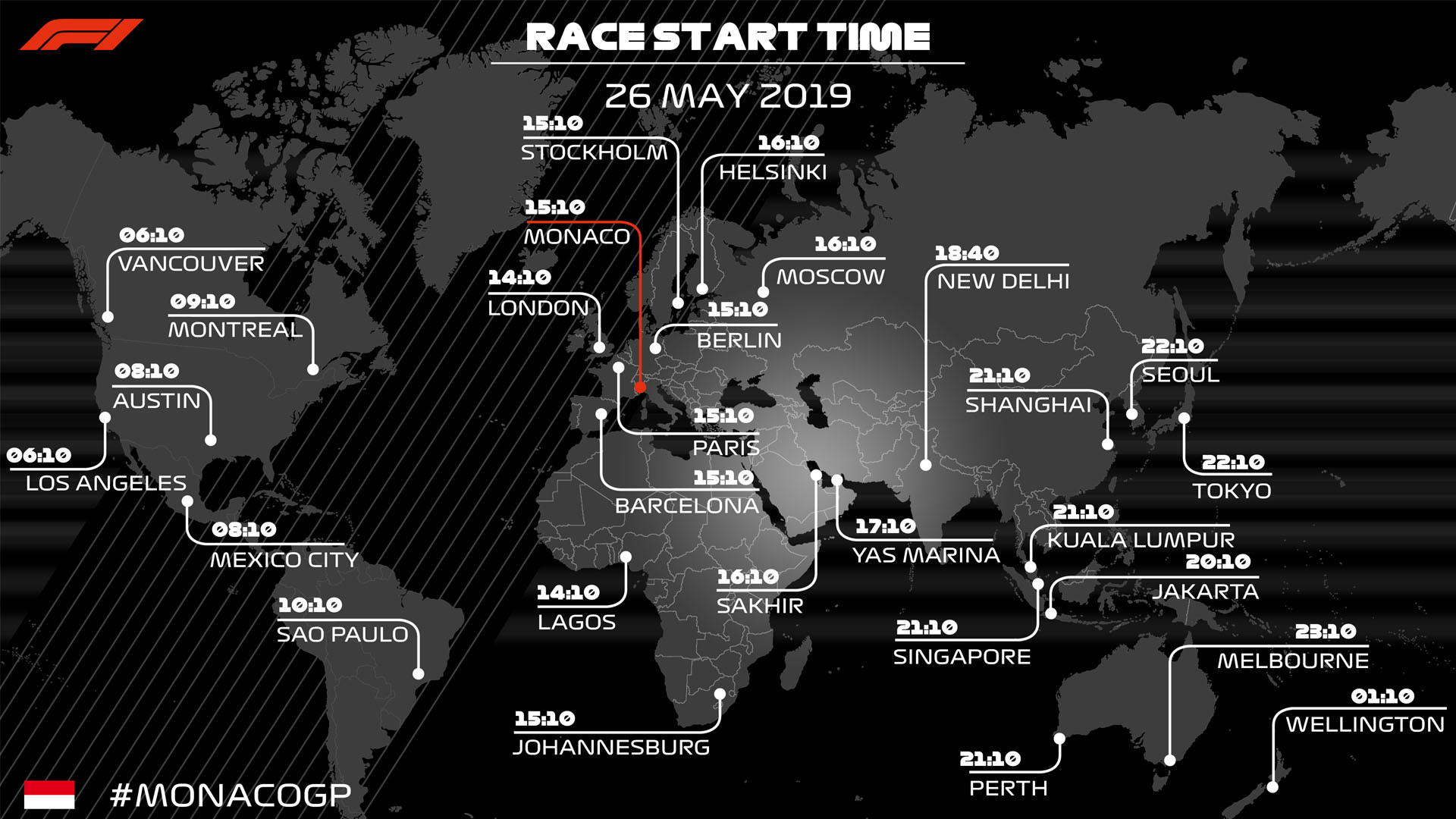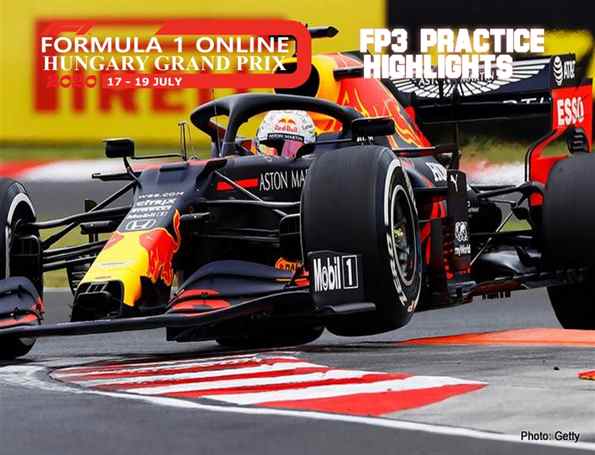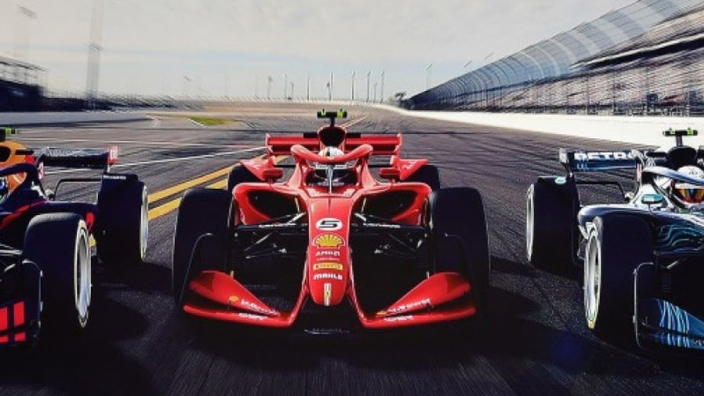Currently, the first qualifying period is eighteen minutes long, with all twenty cars competing. At the end of Q1, the five slowest drivers are eliminated from further qualification rounds, and fill positions sixteen to twenty on the grid based on their fastest lap time. Any driver attempting to set a qualifying time when the period ends is permitted to finish his lap, though no new laps may be started once the chequered flag is shown. After a short break, the second period begins, with fifteen cars on the circuit.
At the end of Q2, the five slowest drivers are once again eliminated, filling grid positions eleven to fifteen. Finally, the third qualifying period features the ten fastest drivers from the second period. The drivers are issued a new set of soft tyres and have twelve minutes to set a qualifying time, which will determine the top ten positions on the grid.
The driver who sets the fastest qualifying time is said to be on pole position, the grid position that offers the best physical position from which to start the race. On a race weekend with sprint qualifying, the sessions on Friday instead consist of one practice session and a traditional qualifying session, which is limited to soft tyres and sets the grid of sprint qualifying. Only the winner of the sprint qualifying will be considered to have taken pole position for the main Grand Prix, and they receive a trophy similar to the pole position trophy awarded at other race weekends. The top three finishers in sprint qualifying receive World Championship points in a 3–2–1 scoring system.
There had been pre-qualifying sessions in the late 1970s, but during the late 1980s and early 1990s the number of cars attempting to enter each race was as high as thirty-nine for some races. Because of the dangers of having so many cars on the track at the same time, pre-qualifying sessions were re-introduced for the teams with the worst record over the previous twelve months, including any new teams. Usually, only the four fastest cars from this session were then allowed into the qualifying session proper, where thirty cars competed for twenty-six places on the starting grid for the race. The slowest cars from the pre-qualifying session were listed in race results as 'Did Not Pre-Qualify' . Pre-qualifying was discontinued after 1992 when many small teams withdrew from the sport.
As the number of cars entered in the world championship fell below twenty-six, a situation arose in which any car entered would automatically qualify for the race, no matter how slowly it had been driven. The 107% rule was introduced in 1996 to prevent completely uncompetitive cars being entered in the championship. If a car's qualifying time was not within 7% of the pole sitter's time, that car would not qualify for the race, unless at the discretion of the race stewards for a situation such as a rain-affected qualifying session. For example, if the pole-sitter's time was one minute and forty seconds, any car eligible for racing had to set a time within one minute and forty-seven seconds. In 2003, the Friday running order was determined with the leader of the Drivers' Championship heading out first.
The Saturday running order was determined by times set in Friday afternoon qualifying with the fastest heading out last and the slowest running first. No refuelling was allowed between the start of Saturday qualifying and the start of the race, so drivers qualified on race fuel. The lap times from the Friday afternoon session did not determine the grid order. In 1996, qualifying was amended with the Friday qualifying session abolished in a favour for a single qualifying session held on Saturday afternoon.
As previously, each driver was limited to twelve laps with the inclusion of a 107% rule to exclude drivers with slow lap times. This was calculated by using the time of the driver on pole position and adding on 7% to create a cut-off time. This format remained until the conclusion of the 2002 season. F1 TV is the official Formula 1 channel around the world, giving fans are more intimate view of the pit lane and talking points across every F1 weekend. You even get access to team radio clips during races that don't go out on TV!
Although live racing isn't available on the streaming service in Australia, yet, it is packed with over 650 archived Grand Prix available to watch on demand, as well as exclusive documentaries. You can pay 4.49 per month for F1 TV, or $34.99 a year. All 22 featured weekends on the F1 calendar will be broadcast in Australia on Fox Sports, which is available to watch on the Kayo Sports streaming service, as well as Foxtel, Foxtel from Telstra and Foxtel Now.
This includes every qualifying and practice session shown live, with no ad breaks during racing to enhance your viewing experience. Generally, a driver will leave the pits and drive around the track in order to get to the start/finish line (the out-lap). Having crossed the line, they will attempt to achieve the quickest time around the circuit that they can in one or more laps . This is the lap time which is used in calculating grid position.
Finally, the driver will continue back around the track and re-enter the pit lane (the in-lap). However, this is merely strategy, and no teams are obliged by the rules to follow this formula; drivers may elect to set several flying laps before returning to the pits. Lewis Hamilton topped the final practice session ahead of title rival Max Verstappen during this championship-deciding weekend. However, with the sun now starting to set, track conditions will be different in qualifying. Each driver is also required to use two different types of dry compound during a dry race, and so must make a mandatory pit stop. Prior to the 2010 season, drivers used to make pit stops for fuel more than once during a race, as the cars on average traveled two kilometres per litre .
Nowadays this figure is higher, due to changes in engines from 2014, and as a result refuelling has been forbidden during a race since 2010. If a driver starts the race using intermediate or wet tyres, he is not mandated to make a pit stop. The second of the back-to-back races at the Red Bull Ring saw Verstappen pick up where he left off, delighting the Austrian crowd with pole position and then leading every lap of his team's home grand prix. A huge number of Dutch fans also mad there way to Austria to watch their hero dominate proceedings. Hamilton earned the 100th pole position of his career in Barcelona, but duly gave up first position on the first corner of the grand prix, having no option but to sacrifice the spot to an aggressive move by Max Verstappen. Drivers may complete as many laps as they choose.
At the start of 2005, the sessions were held on Saturday afternoon and Sunday morning. Lap times from both sessions were counted to give the overall aggregate position. From the 2005 European Grand Prix onwards, the Sunday morning session was dropped for a single run on Saturday afternoon having proved unpopular with drivers, teams and broadcasters. The running order was the reverse of the previous race result. Channel 4's commentator called the inaugural Saudi GP "an incredible day of confusion," which is an understatement – this will go down as one of the most contentious races of all time. But it delivered on thrills and means a final race of the season with the two leading drivers tied on points, as the incredible 2021 season reaches its conclusion.
The drama dutifully returned on the street circuit of Azerbaijan's capital, with a joint-record four red flags brought out during Saturday's qualifying session. Ferrari's Charles Leclerc managed to grasp pole position for the second race in a row but failed to keep it beyond lap two, when he was overtaken by Lewis Hamilton. After that the Monegasque went backwards down the order but recovered to fourth. The qualifying race is held a day before the final race day.
It is carried out to determine the starting grids of the drivers on the final race day. That one-hour reduction in practice time will force the teams to cram in more on-track action to get their cars in the set-up sweet spot for qualifying and the race. Drivers or cars may be issued penalties against their starting positions, commonly for exceeding component limits, or sporting offences in free practice, qualifying, or a previous race. This can lead to the starting grid being significantly different from the qualifying order. The 107% rule was removed since the FIA's rules indicated previously that 24 cars could take the start of a Formula One race, and a minimum of twenty cars had to enter a race.
In 2003, the qualifying procedure changed to a single-lap system, rendering the rule inoperable. However, there were concerns about the pace of the new teams in the 2010 season. As the qualifying procedure had been changed since the 2006 season to a three-part knockout system, the rule could now be reintroduced. As such, the 107% rule was reintroduced in the 2011 Formula One season.
What Time Is F1 Qualifying Tomorrow Est Currently, cars eliminated in Q1 have to be within 7% of the fastest Q1 time in order to qualify for the race. One thing is certain, this season, which has won the sport a whole legion of new fans, is unlikely to have had its final plot twist. The possibility that the destination of this year's title is eventually decided in the stewards' room, or even a court room, remains very real.
McLaren's Lando Norris, who starts third after a brilliant performance, admitted he was so nervous of getting caught up in the drama, he wasn't even sure he would try to race the two championship leaders. Another exciting element of the 2021 F1 season was the debut of Sprint Qualifying. The 100km races determined the starting grid for Sunday's grands prix and awarded championship points to the top three drivers.
It was "won" by Max Verstappen, who had qualified on pole, with a delighted George Russell in the Williams finishing behind him after a sensational lap on Saturday. Meanwhile Stroll was by the accident ahead and drove into the side of Leclerc. After a safety car, teams were told there would be a standing start from the grid, but just beforehand all the drivers except leader Hamilton dived into the pits for slick tyres, as the track was drying. In terms of track dynamic, there will be long straights at the Jeddah Corniche Circuit this weekend, which ought to favour Mercedes as they gun for a one-two finish. The first two practice sessions completed on Friday have given the F1 teams and fans a real idea of the conditions on the brand new Jeddah Corniche Circuit, which had never seen any kind of racing on it before this weekend. Villeneuve, whose father is the late F1 legend Gilles Villeneuve, most notably won the 1995 Indianapolis 500 and the 1997 Formula One championship, the latter on the strength of seven race wins and 10 pole positions.
He has raced on a number of circuits since leaving F1 full-time in 2006, including what is now called the NASCAR Xfinity Series, IndyCar, Le Mans and the last two seasons in the NASCAR Whelen Euro Series. Cord-cutters are in luck, too, as you can get ESPN without having an expensive cable package. For the last two races of the year, for example, the network is showing the race through its ESPN Plus streaming service with prices starting at $6.99 a month. It's Max Verstappen who pulled out an extraordinary lap in qualifying to take the ultimate pole position of the season, with the Mercedes of Sir Lewis starting alongside him on the front row. The final race on the Formula 1 calendar is the Abu Dhabi Grand Prix 2021 (10-13 December), with every session shown live and exclusive viaFox Sports 506(Foxtel/Kayo). Foxtel and Kayo Sports also have the most extensive live TV coverage of the Supercars Championship, as well as each and every weekend of the entire 2021 MotoGP racing season.
Here you can find out the next F1 qualifying time as well as practice sessions and the race itself. Watch the F1 schedule below live and direct from Abu Dhabi in HD. This was done in order to equalise the footings of teams which may not have had the wherewithal to compete in all events. The seven-times world champion again had to settle for second place, although he did snatch an extra point for the fastest lap thanks to a late pit stop.
Mercedes Boss Toto Wolff admitted that, for the first time in the turbo-hybrid era that his team has dominated, Mercedes had "no weapons in our armoury". Hamilton agreed, estimating that Red Bull had an advantage of a quarter of a second on every lap of its home circuit. Elsewhere outside the big two, Fernando Alonso's podium finish, the changing team line-ups for next year and even the additions of rules such as sprint qualifying have all been big talking points in Formula One recently. On soft-compound tires, Verstappen took the fastest lap of the qualifying session. His Red Bull teammate, Sergio Perez, will be starting fourth. All this has led to larger, heavier cars that are more difficult to race.
All this weight leads to increased pressure on already less-than-ideal tyres. They need to change too, and F1 desperately needs another tyre war. However, that's a different conversation for a different day. In the US, it's ESPN that's providing comprehensive coverage of the 2021 F1 season, and it's showing the Abu Dhabi Grand Prix live - as well as the all-important Qualifying and practice sessions. You can stream F1 Grand Prix live, in High Definition with Foxtel and Foxtel Now. This includes every qualifying, practice and race across 22 events, starting with Bahrain Grand Prix in March right through Abu Dhabi in December.
You can check out Foxtel Now for free today with a 10 day free trial. If you're happy to pay a subscription fee so you can watch entire races live, then Sky is the only option in the UK. While Liberty operates an online streaming service – F1 TV Pro – you can't watch it in the UK because of Sky's exclusive deal. As of 2020, ten teams are entered for the Formula One World Championship, each entering two cars for a total of twenty cars. The regulations place a limit of twenty-six entries for the championship.
The slowest cars excess to the circuit limit would not qualify for the race and would be listed as 'Did Not Qualify' in race results. A qualifying session is held before each race to determine the order cars will be lined up in at the start of the race, with the fastest qualifier starting at the front and the slowest at the back. A Formula One Grand Prix is a sporting event which takes place over three days , with a series of practice and qualifying sessions prior to the race on Sunday.
Verstappen's car has only just had a rear wing fitted and Sergio Perez's doesn't even have one on yet. Still 20 minutes to go and the teams are very good at getting this done in time but rear wing issues have been frequent for Red Bull this season. For those on a budget, once again there are extended highlights of all F1 races on Channel 4, with additional live coverage of the British Grand Prix in July.
A last-minute rights deal meant the Channel 4 also showed live coverage of the Abu Dhabi finale, though using the Sky Sports F1 feed and commentary. Highlights were also available on the channel's on-demand service, All 4. The stewards initially held the backmarkers, who sat between Hamilton's lead car and Verstappen in second, behind the safety car. But with the Williams wreckage cleared away, just before the safety car pulled off the circuit on the penultimate lap, the backmarkers were released, moving Verstappen directly up to the leader's rear wing. Verstappen complained of having worn tyres with five laps to go, but he couldn't pit without losing second place to Ocon. Hamilton nursed his own car home to take the win, with Verstappen 7sec behind – his time penalty making no difference to the order.
Completing the excitement, Bottas passed Ocon metres before the chequered flag to complete the podium. But when the leader slowed on the straight to hand back the place, Hamilton ran into the back of the Red Bull, causing damage to his front wing – a result of poor communication between teams and race control, it is thought. Both cars were able to continue and Verstappen yielded again but immediately re-took the position at the next corner. Verstappen started seventh but made a storming start to reach fourth by turn one, but Hamilton capitalised on pole position and kept his lead.
By lap five, Vesrtappen was up into second place, driving the doors off his Red Bull , with Bottas and Perez also driving through the field to make up for lowly grid positions. It was an error that cost him his first victory, with Hamilton slipping by on the final lap to claim an historic 100th race win and return to the top f the driver's championship. Norris led for much of the race, and regained the advantage shortly after a late stop for a set of fresh rubber. Qualifying times are very important and determine the starting position on the strat grid for every driver on race day.
In the championship-deciding Abu Dhabi Grand Prix, it will be Max Verstappen starting from pole position, his 10th pole of the season — and the most important of the year. Lewis Hamilton topped both practice sessions on Friday at a track that is expected to suit the Mercedes, but Red Bull title rival Max Verstappen was less than two tenths behind him in fourth. After 21 exciting races, the F edition heads into the season finale in Abu Dhabi this weekend to determine the Drivers' and the Constructors' Champions. Title contenders Lewis Hamilton and Max Verstappen are level on points (369.5) going into the final race, with the Dutchman having a slight advantage due to more race wins this year. Verstappen has won nine GPs as compared to Hamilton's eight.
Crucially Verstappen will be on soft tyres after flat-spotting his set of mediums during the second qualifying session - which he otherwise would've started the race on - while Hamilton will be on mediums as expected. After 21 races, Formula 1's world championship will be decided at this afternoon's season finale as Max Verstappen and Lewis Hamilton go head-to-head at the Abu Dhabi Grand Prix. The UAE plays host to the final round of the 2021 Formula 1 season, as Lewis Hamilton and Max Verstappen go head-to-head for the title.
